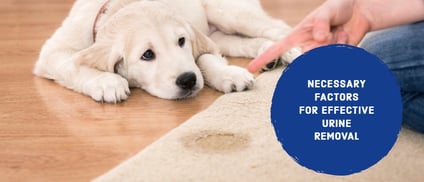Cellulosic browning, BHT, or alkaline yellowing and wicking of spots and soils all describe a common problem: surface discoloration. Sometimes there is overlap, but usually, the reason for surface discoloration can be traced to one root cause. Cellulosic browning was prevalent with carpets that had jute backing in the last century. BHT yellowing was a phenomenon also from the last century. Cleaners use browning to describe conditions that today are classified as wicking.
Occasionally you will still see alkaline yellowing, but wicking is the primary surface issue that appears after drying. Alkaline yellowing is related to natural fibers that are left in an alkaline state. Wicking is related to hidden spots and soils rising to the surface as drying occurs. The trend toward a polyester-type carpet has increased this trend. In short, alkaline yellowing is primarily found with natural fibers like wool and cotton and wicking can be found in all carpets, but is very common with polyester fibers.
Most cleaners will not use strong alkaline on wool or cotton, so it is usually the result of not identifying natural fibers in their pre-inspection. Alkaline yellowing generally is removed with an acidic treatment. A light hydrogen peroxide treatment may need to be the last step in the most difficult of situations.
However, wicking of spots and soils that seem to disappear after cleaning, only to reappear later, has been an aggravation to carpet cleaners for decades. This has led to callbacks and unresolved customer dissatisfaction and all carpets can experience this issue to some degree.
Why do some soils, spots, or stains wick back after drying and what is the best way to prevent them? There are two requirements for wicking. First, some water-soluble soil must remain in the carpet usually deep in the pile even in the backing of the carpet. Then there is that unusual property of water that allows it to flow upward against gravity. This is known as capillary action. It is the mechanism that allows water-carrying nutrients to reach plants-- even treetops hundreds of feet tall.
What are the elements in wicking that need to be considered? Incomplete removal of soils, spots, and stains is the catalyst for wicking. Wicking won’t occur unless there are soils left in the carpet. Insufficient pre-vacuuming, inappropriate prespray for the soil levels and incomplete extraction also contribute to surface wicking.
The type of carpet impacts the degree of wicking. Nylon and wool fibers absorb moisture while polyester fibers do not. In the extraction process, water is injected into the carpet, nylon and wool fibers absorb most of this water while polyester allows the water to go directly into the carpet backing.
Over-wetting increases dry times by fueling the capillary action. Over-wetting can be diminished by lowering the psi, especially for polyesters. You can increase the number of dry strokes by using a water claw for concentrated areas of spots and stains. Use fans to speed up drying, especially in the areas of concern for wicking. Soils, spots, and stains do not wick if the carpet is dry.
Judicious use of products containing polymers is designed to slow down wicking. These types of products also are typically acidic providing some neutralization of alkaline residues. They also surround fibers to make them more resistant to re-soiling. In short, they limit wicking and help keep the carpet cleaner longer.
Save time. Save money. Prevent callbacks. Be sure you specifically address all of the elements that contribute to wicking. You and your clients will love the results and you can say goodbye to those annoying wickbacks.
by Scott Warrington & Tom Forsythe
Enjoyed reading this post? Read the following articles:



